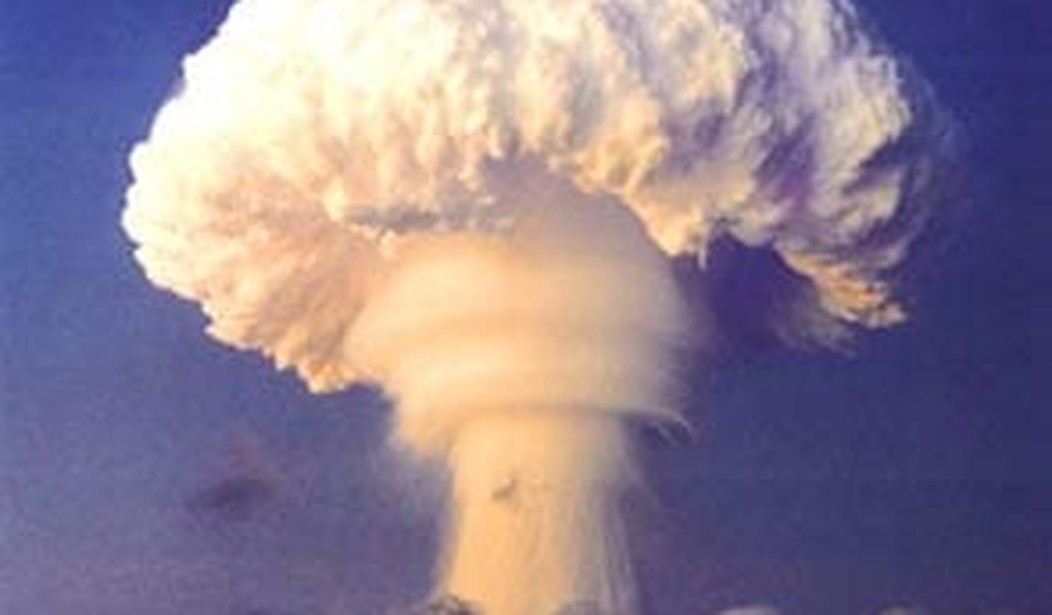WASHINGTON – A new research paper argues that axing the U.S. nuclear triad system could save the Pentagon billions of dollars by canceling its land-based missile programs and bombers in favor of a submarine-only nuclear delivery system.
“This paper, I hope, reflects the kind of top to bottom review that is necessary of the [nuclear] arsenal and the rationales that have sustained it,” said Christopher Preble, vice president for defense and foreign policy studies at the Cato Institute, at a forum on U.S. nuclear weapons policy.
Preble; Matt Fay, a PhD student at Temple University; and Cato defense research fellow Benjamin Friedman argue that nuclear weapons are irrelevant in U.S. wars. In their report, the researchers recommended cutting bombers and land-based missiles, saying submarines are more effective to confront the threats now facing the U.S. They conclude the U.S. can do without nuclear bombers and land-based missiles and save taxpayers roughly $20 billion a year.
“Budgetary benefits and military use of nukes have declined,” Friedman said. “I think the cause of that is that they [nukes] aren’t used in the wars we actually fight.”
He said most of the wars the U.S. wages are increasingly against insurgents and weak states without nuclear arsenals.
“Nuking a bunch of people in a country that doesn’t threaten the survival of the U.S. isn’t morally acceptable so nobody thinks of that as a possibility,” Friedman said.
In the wake of World War II, the U.S. held the upper hand in nuclear capabilities, using the threat of “massive retaliation” as a means to deter Soviet aggression. By the 1950s, the Soviet Union had accumulated a sizable nuclear arsenal that could be delivered on the territory of the U.S. and Western Europe.
By the mid-1960s, unilateral deterrence gave way to mutual deterrence, a situation of strategic stalemate between the Soviet Union and the U.S. The two superpowers would refrain from attacking each other because of the certainty of mutual assured destruction. Both superpowers came to the recognition that the first requirement of an effective deterrent was that it should ride out a surprise attack.
This led to the creation of the U.S. nuclear triad system — bombers, land-based intercontinental ballistic missiles, and submarine-launched ballistic missiles — during the Eisenhower administration to ensure that the U.S. nuclear arsenal would survive a preemptive Soviet strike.
Fay said that during the Cold War there was not agreement on what exactly it would take to deter the Soviets, but many people have come to accept U.S. deterrence strategy because the superpowers have failed to use their nuclear arsenals against each other.
“Because superpowers failed to obliterate one another, many people have now come to take at face value that we’ve somehow arrived at some sort of optimal and apparently permanent deterrence strategy that is enshrined in the nuclear triad and operative at all times, even absent the particular political circumstances of the Cold War,” Fay said.
Fay said no U.S. adversary has the capability to destroy all U.S. ballistic missiles, let alone all three legs of the triad, and no state currently threatens the Navy’s nuclear submarines, which makes abandoning two legs of the triad more feasible.
“Any potential adversary who could develop advanced anti-submarine warfare capabilities would still have to conduct a first strike on those subs in ports and maintenance, and track down the eight to nine subs at sea at any given time. And it would have to do so with the confidence it could destroy them all,” he said.
The Obama administration has made the case for maintaining the system on technical grounds. According to the 2010 Nuclear Posture Review, the administration plans to keep the triad to guard against the possibility of technical problems or other vulnerabilities. The report went on to say that “each leg of the triad has advantages that warrant retaining all three legs.”
President Obama announced in June his plans to slash the U.S. nuclear stockpile by one-third. In a report to Congress released the same day as Obama’s announcement, the Defense Department affirmed the U.S would retain the triad even amid further cuts, saying the system allows the U.S. “to maintain strategic stability and operational flexibility at a reasonable cost.”
Elbridge Colby of the Center for Naval Analyses said reducing America’s nuclear forces would be “imprudent” and “outright dangerous.” He also said the Cato paper underestimates the threats to U.S. security, leading them to discount the value of a having a strong nuclear force.
Colby said that cutting the triad down to one system would be like preparing to buy “a smaller insurance package.”
“Nuclear weapons, like an insurance policy, are not weapons that we are likely to need right away for common contingencies. Rather they’re capabilities that we maintain to ward off, and if necessary, to deal with more extreme scenarios that could be catastrophic if they catch us unprepared,” Colby said.
Hans Kristensen, director of the Nuclear Information Project, noted that submarines may be, in fact, more vulnerable to attacks because they would potentially be up against the land-based weapons systems of Russia and China.
“There’s something to think about here in terms if we move to…only sea-based systems. How is that force going to interact with shaping strategic stability with Russia and China…and how is such a force going to affect extended deterrence commitments to allies,” he said.
Kristensen said it would be harder for the U.S. to signal its commitment to allies with a ballistic missile submarine force.
There are ten primary missions outlined in the Defense Department’s 2012 strategic guidance. Three of those missions require to maintain an effective deterrent to nuclear war that can under any circumstance confront an adversary with “the prospect of unacceptable damage, both to deter potential adversaries and to assure U.S. allies and other security partners that they can count on America’s security commitments.”
While the researchers acknowledge that political realities make the triad’s elimination unlikely, they believe the sequester may force the Pentagon to reassess maintaining three separate delivery systems.
“Austerity and the declining utility of nuclear weapons in U.S. wars create a possibility that military leaders might agree to sacrifice a triad leg to preserve other capabilities,” they write. “Policymakers should exploit that circumstance to improve strategic debate.”









Join the conversation as a VIP Member